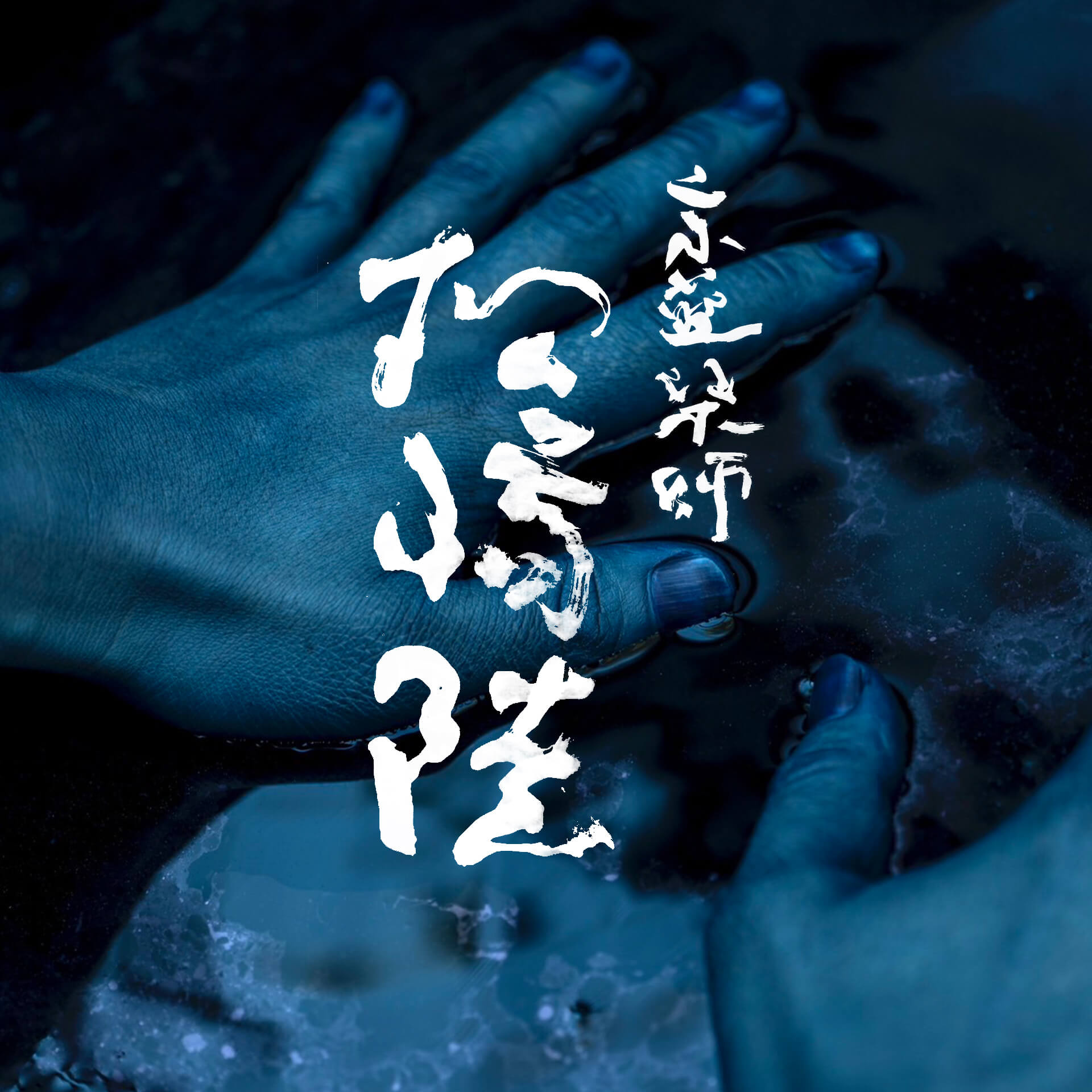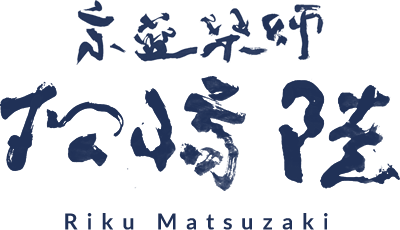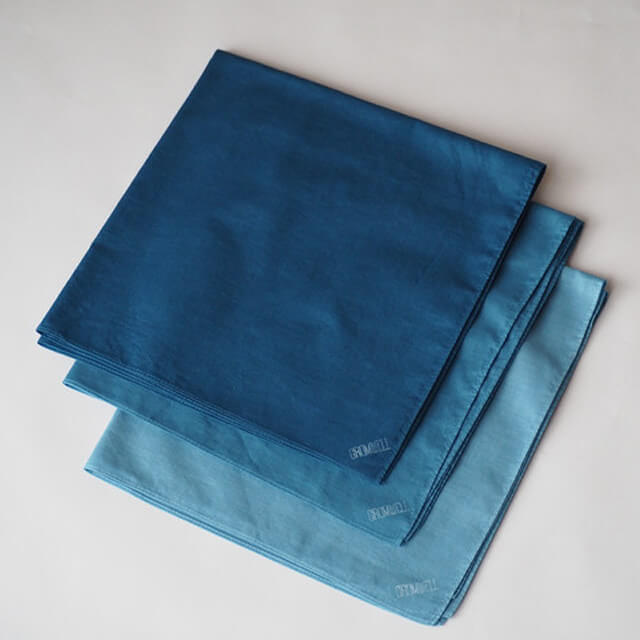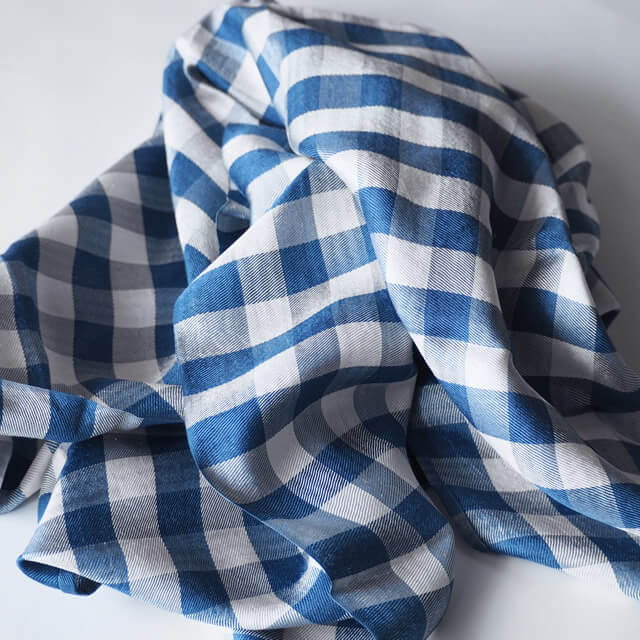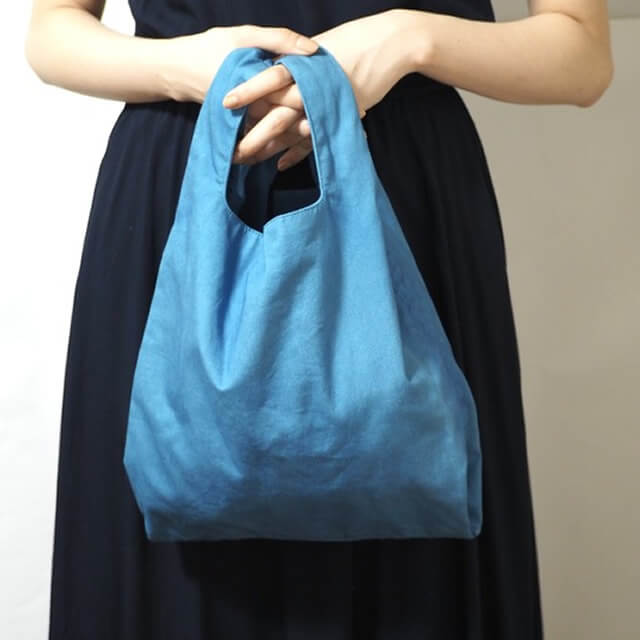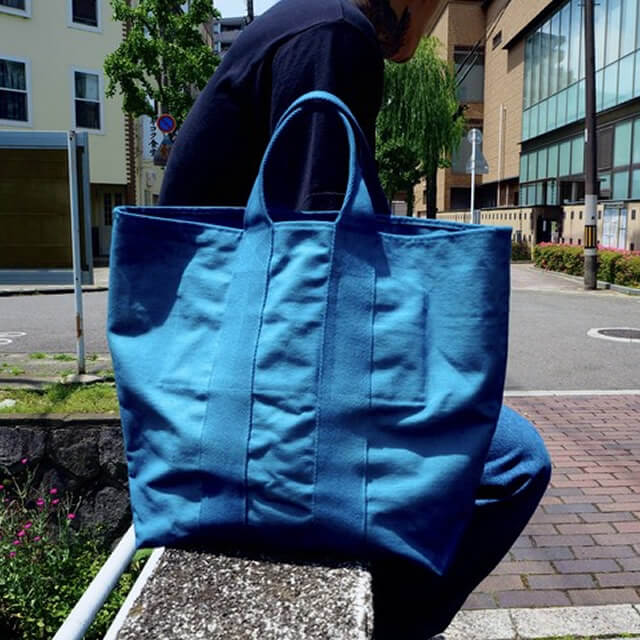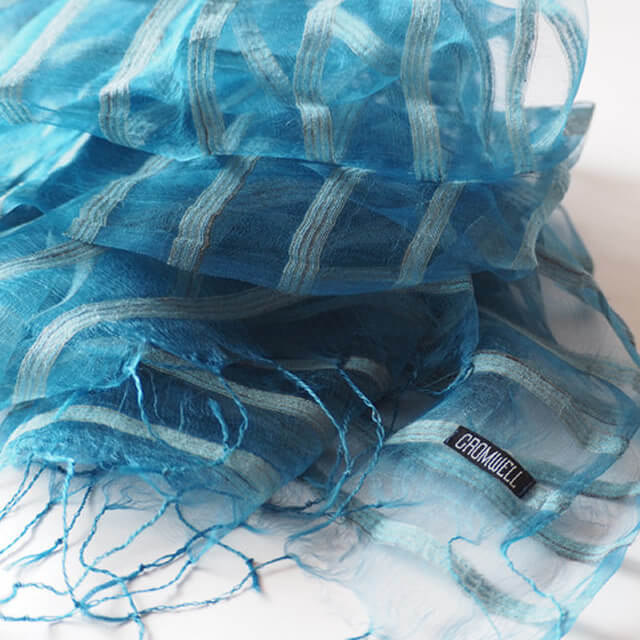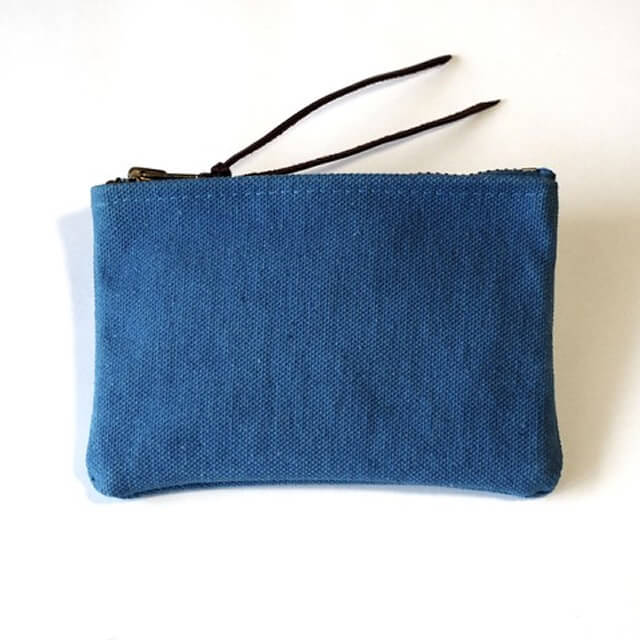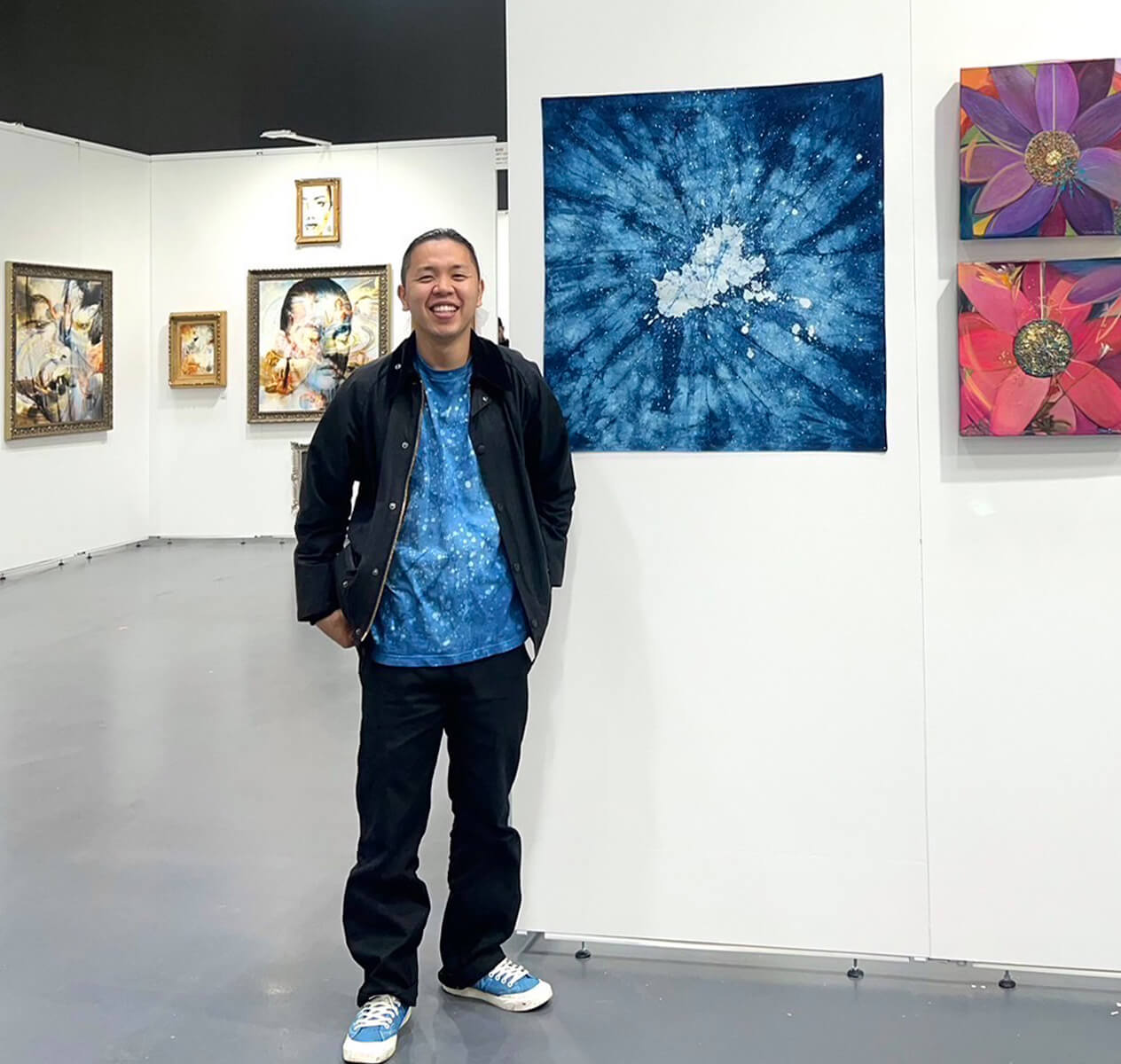
RIKU MATSUZAKI
"Encounter with "Japan Blue" in New York
In 2013, after graduating from university, I learned about the existence of "Japan Blue," a type of indigo dyeing that I encountered in New York. This inspired me to become an indigo dyeing artist.
After returning from New York, I began to think about my future without any particular knowledge. I started to realize that having a skill would enable me to make a living. By chance, I saw a TV program about indigo dyeing and began to research it. I decided to visit an exhibition of YOSHIOKA, a dyeing shop that has been in Kyoto for over 200 years and was featured on the TV program.
At the exhibition, I saw not only "Japan Blue" but also various colors such as green, yellow, red, and purple, all of which were dyed from natural plants and animals. I was shocked. At that moment, I thought to myself, "I want to dye using the plant colors in front of me with my own hands." And then, I immediately thought of wanting to become an apprentice of the fifth-generation master of YOSHIOKA, Sachio Yoshioka, and took action."

Learn about the process from sericulture to clothing at the Nomura Silk Museum.
However, it was not that easy, and there was no way he would take a young man with no background as an apprentice.
After many requests, I agreed to accept him as an apprentice on the condition that he would study for two years at the "Nomura Silk Museum" in Ehime Prefecture, and in June 2015, I embarked on the first step of his training in Ehime Prefecture.
At the Nomura Silk Museum, I was able to learn about everything from the process of raising silkworms to dyeing silk threads, dyeing the threads with plants, hand-weaving the dyed threads on a machine, and sewing kimonos.
In addition, I was able to learn about the cultivation of indigo and safflower, which are used as dyes. More than half of my monthly tuition was used to pay for indigo dyeing materials, so I studied at the "Nomura Silk Museum" during the day and worked part-time at a convenience store at night to make a living.
After graduating from the "Nomura Silk Museum," in June 2017, I became an apprentice under Sachio Yoshioka, the fifth generation head of the Sachio Yoshioka Dyeing Studio.
Became an apprentice under Mr. Sachio Yoshioka, the fifth generation head of the Sachio Yoshioka Dyeing Company.
At [Mr. Sachio Yoshioka, the fifth generation head of Sachio Yoshioka Dyeing Company], I was able to learn many things and accumulate great achievements.
I also learned other things besides dyeing by proofreading Mr. Sachio Yoshioka's manuscripts, preparing materials for lectures, and accompanying him to lectures.
I also started my own brand "GROMWELL" with the permission of Mr. Sachio Yoshioka, and started preparation and production of the brand little by little.
In the second year of training at Yoshioka, I rented a field of about 7.12 sq/ft and started growing indigo and manufacturing dyes, and also learned from the history of dyeing that Kyoto had been a production center of indigo dyeing and that Kyoto produced the highest quality indigo.
I was shocked to learn that the person who introduced the most advanced indigo cultivation method from Tokushima to Kyoto was beheaded by Tokushima Prefecture due to the interest in indigo in the Edo period.
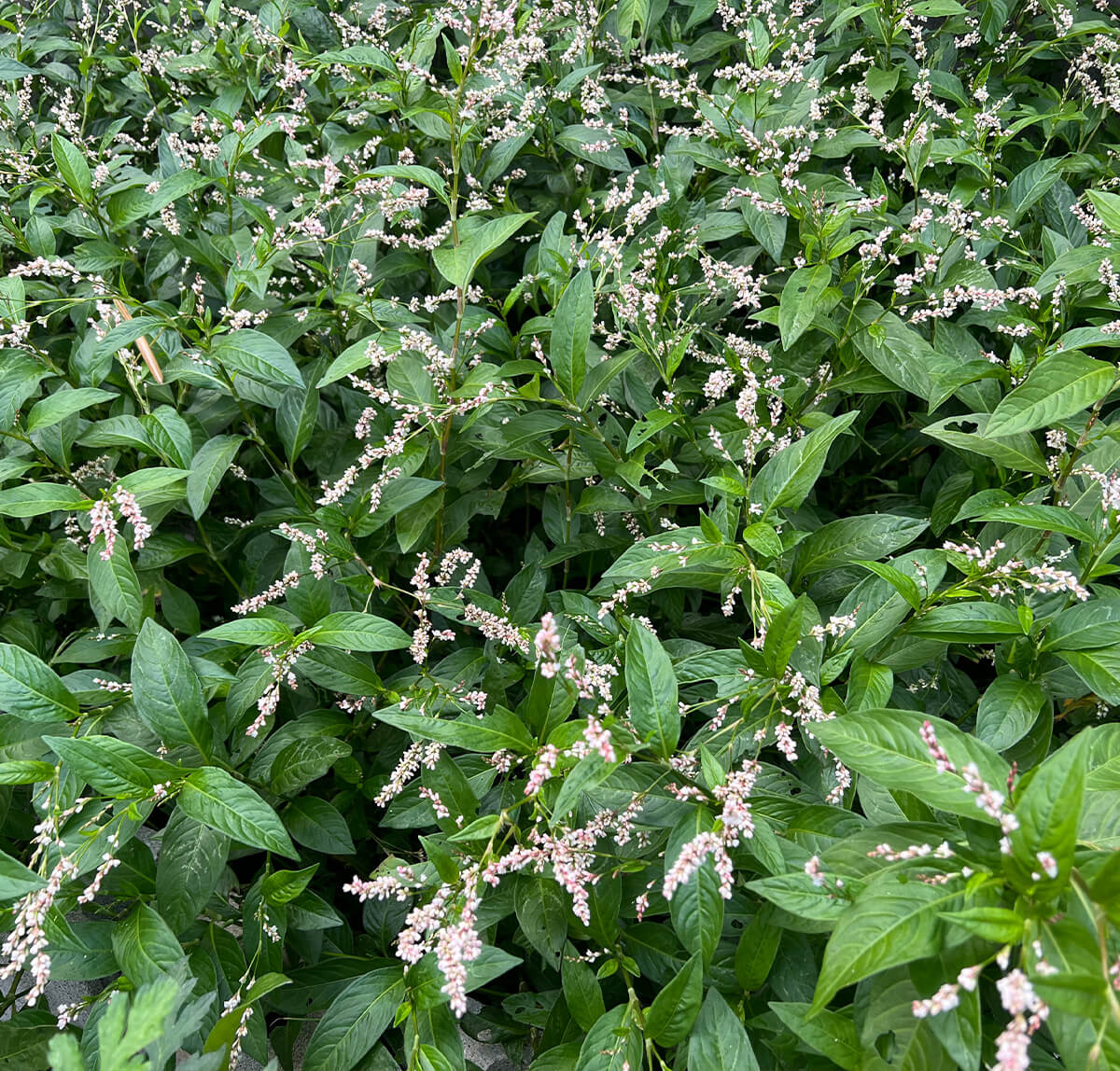
Activity and Production of Riku Matsuzaki
In the third year of training at Yoshioka, Mr. Sachio Yoshioka passed away, and I postponed my independence for the originally planned three years. During that time, I produced a sento pouch with his brand 《GROMWELL》 in collaboration with Umeyu, a Kyoto sento sauna.
After that, he became independent and dyed work clothes (tenugui) for Menya Inoichi, a ramen shop in Kyoto.
I rented a 320 sq/ft field and took over the historical cultivation method (only natural fertilizers) to revive “Kyoto indigo (Kyoai)”, which was destroyed in the Taisho era.
Through a relationship with a soba restaurant (Sobakiri Kogoro), I takes all the dashi broth (dried bonito flakes and kelp) that is discarded daily, dries it, mills it, and reuses it as fertilizer for the fields, and instead of discarding the 100% natural indigo dye solution as waste liquid, circulates it as fertilizer for the fields.
All of the products made under I own brand, GROMWELL, are made from natural materials, and I practices "making things that start from the soil and return to the soil.
We are making products that follow the earth's recycling cycle by converting used and discarded products into compost (soil) and using it as fertilizer for the fields.
Crowdfunding challenge to build a workshop in 2022 achieved 154% of the total amount.
Construction of Kyoto indigo dyeing studio
Held a solo exhibition at engawa KYOTO, "Riku Matsuzaki: “Kyoto Indigo Dyeing (Kyoai)” Exhibition”.
Also, commercialized organic “Kyoto Indigo (Kyoai)" tea with tea specialty store 7T+.
Collaborated with IKEUCHI ORGANIC and sauna Umeyu
I also produced a curtain for a public bath in Kyoto, Hakusan-yu, and a curtain for a flower shop, POPPY FLOWER & GREEN, in Ehime Prefecture.
At the same time, I also works as an artist. I also focuses on art works and participated in an art fair in Austria.
In 2023, I changed my brand name from GROMWELL to Riku Matsuzaki and started producing products under the concept of "Encapsulating life with the colors of life”.
MEDIA
- 2021
- March: Kyoto Kurashi Plus One 07
- June: TRANSIT magazine No.52
- September: α-station Tea for Two
- 2022
- February:
"THE KYOTO" Passing down "Kyogei" to the next generation
"Kyoto Shimbun" CF for reviving high-quality "Kyogei"
- April: "KBS Kyoto" Shimofukuro Koji's Hot Hot Radio
- May: "Kyoto Living" FM845 Wakaban NEO
- July: "THE KYOTO" Future of "Kyogei" opened by completion of young craftsmen's workshop
- August: "Kyoto Credit Cooperative" Q Radio Vol.63
- September:
"Asahi Shimbun" Kyoto's "Aizome" towards the world's blue
"ZTV" Oh! Take it and show it
- October: "ZTV" Fureai Masshoi!! Returns
- November: "KBS Kyoto TV" Kyoto Days
- December:
"KBS Kyoto Radio" Keiji Yamada's Local Fit
"THE KYOTO" Social impact created by “Kyogei"
- 2023
- February: "Connecting Generations in Kyoto vol.11: Kimono and former geisha Satsuki interviews”
- March:
"Connecting Generations in Kyoto vol.12: Kimono and former geisha Satsuki interviews” Final episode
Leaf Magazine “Tsumugino” Vol.5
- April: Ono Architectural Design "Natural Life" April issue
- May: "Monthly Chanoma" May issue
- June: Radio Kansai "Toshi and Daiki's Ee-Yan Car! Let's do it!
Riku Matsuzaki ONLINE STORE

Riku Matsuzaki
ONLINE STORE
Riku Matsuzaki
ONLINE STORE
CONTACT
To inquire about collaboration products with Riku Matsuzaki, a “Kyoto indigo dyeing (Kyoai)”artist, or for any other inquiries, please feel free to contact us by phone or through our inquiry form. We look forward to hearing from you.
